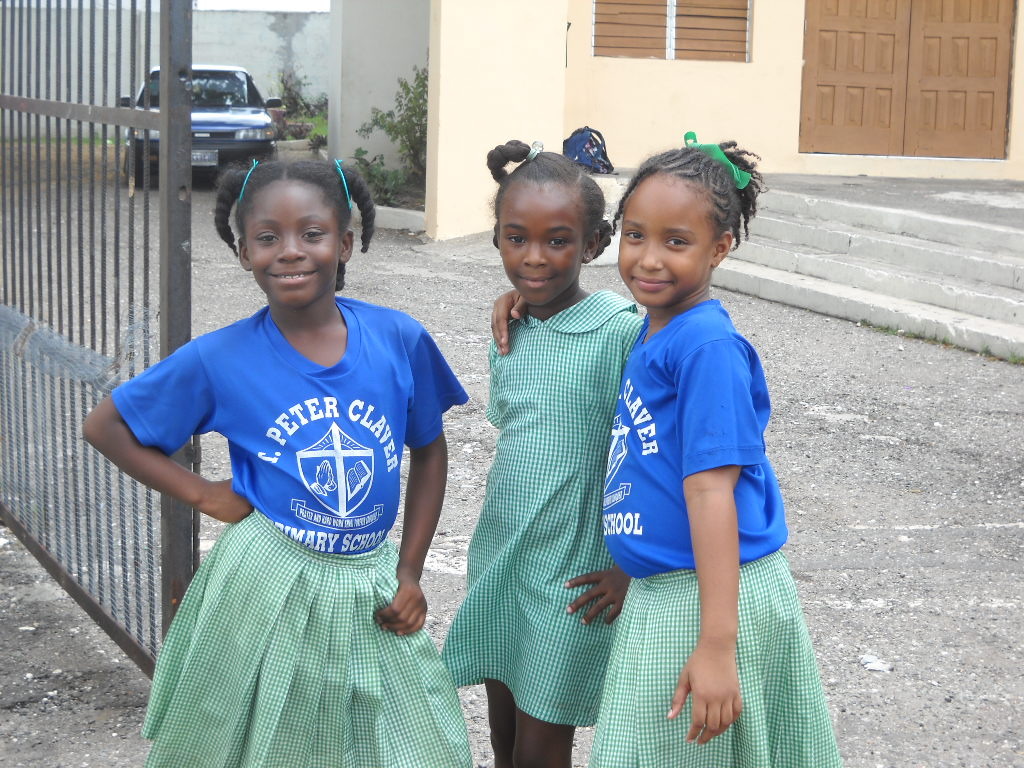Nestled in the heart of the Caribbean, Jamaica boasts a colourful landscape and vibrant culture, making its north coast a popular tourist destination. But it only takes a short trip south across the country to the capital city, Kingston, to discover the realities of life for most Jamaicans. Saddled with the burden of heavy international debt, the Jamaican government is unable to provide adequate funding for key projects like infrastructure development and education.
Jamaica has a relatively short history as an independent nation, having gained its independence from Great Britain in 1962. Understanding this history and the origins of Jamaica’s debt is fundamental to assessing both the country’s fiscal situation and its ability to educate its people. Throughout the 1990s the Jamaican economy experienced negative growth in all sectors but bauxite, energy, and tourism. Economic stagnation was compounded by a financial sector meltdown caused by inadequately regulated financial liberalization in the 1980s. By 2002-03, debt had skyrocketed to 150% of GDP. In 2010, debt remained significant at 120% of GDP.
Like many economically struggling countries in the Global South, Jamaica has had a tumultuous 40-year relationship with the International Monetary Fund (IMF), characterized by frustration and an overwhelming sense of powerlessness among Jamaicans. The money received from the IMF and other international financial institutions is contingent upon structural adjustment policies that, many claim, have undermined Jamaicans’ self-sufficiency, including national food security and the ability to maintain the education and health care systems.
After the Jamaican economy declined by 2.7% in 2009, the government was forced to sign a new IMF agreement. As recession hit Jamaica’s trading partners, external demand for Jamaican goods declined. At the same time, due to rising unemployment, lower incomes, and less money from remittances entering the country, domestic demand deteriorated. These, and other factors, left Jamaica in need of a financial infusion. The IMF agreement, while providing some financial relief, comes at the high cost of perpetuating Jamaica’s dependency on the IMF and, through structural adjustment and conditionality, prevents Jamaica from controlling its own future.
The government’s financial woes have been felt particularly acutely by Jamaica’s education system; debt has crippled the government’s ability to develop an education system that will bridge cultural divides and enable Jamaicans to take ownership of their future. In 2009, Jamaica was servicing debt that constituted 47%of the government’s expenditure budget.[H1] With almost half of its budget consumed by debt, the government’s ability to maintain the education system is severely disabled.
Jamaican educator Margaret Brissett-Bolt points to existing prejudices within the country – including those between wealthier ‘uptown’ Jamaicans and ‘downtown’ inner city Jamaicans – as impediments to Jamaica’s progress as a nation. She states vehemently that these barriers divide children, and that only through education will Jamaicans come to know and understand their mutual history.
Indeed, there are strong linkages in Jamaica between education and poverty. Poor students, who often face difficult home environments, are shuffled into lower quality schools; they exhibit higher degrees of absenteeism and lower enrolment in school after age 14 than children from wealthier families, and often end up far less educated. The general increase in enrolment over the past two decades has masked the inequality in accessibility of the education system to different children.
Further, Jamaican students must take standardized tests. For students who do not fare well on the grade six standardized assessment, Junior High School, which students finish at the age of 15, is often the end of the road. Insufficient funding for education has prevented the creation of more school places that would accommodate students who wish to learn, but who face the sad reality of exclusion from the system. A 2003 country economic memorandum on Jamaica produced by the World Bank also points to automatic promotion as symptom of the inadequate number of places at schools; the practice allows children to move through the school system without learning the requisite skills in order to free up spaces for children in lower grades.
Yet, aside from emigration, education is the most significant scope for social mobility in Jamaica. A system must be built up that produces an educated citizenry that will stay in Jamaica as entrepreneurs, investors, business leaders, and as a new generation of teachers. Only through home-grown educational reform can the social divisions Margaret Brissett-Bolt speaks of be healed.
Reform will be a long process in Jamaica, particularly given the interconnectedness of poverty and education in the country. Realistically, only after Jamaica’s economy has experienced a period of positive growth, and debt has reached a more sustainable level, will changes to the education system be possible.
With proper funding, more school places can be made available and classrooms can be transformed into positive, dynamic environments where children of all backgrounds come together to embrace their mutual cultural heritage as Jamaicans. Teachers can be trained specially in reading and math; “high interest” learning materials can be introduced to the system to engage students; students’ achievement and learning difficulties can be rigorously followed and assessed; programs geared towards slow learners and students who need additional help can be initiated; the best teachers can be placed in the primary schools, the foundation of education in Jamaica, where, educational research shows, they are needed most.

Brenna Owen travelled to Kingston, Jamaica in March 2010 with the Peterborough, Ontario-based organization Jamaican Self-Help. She volunteered in a special needs classroom at Maxfield Park Children’s Home. She was struck by the resilience of Jamaican teachers and pupils in the face of inadequate classroom supplies and other educational resources that foster a healthy and effective learning environment.





